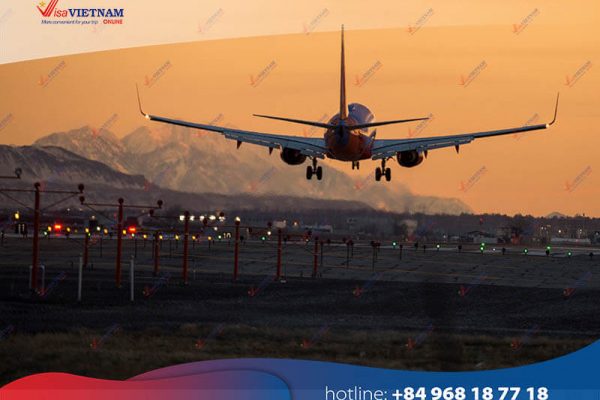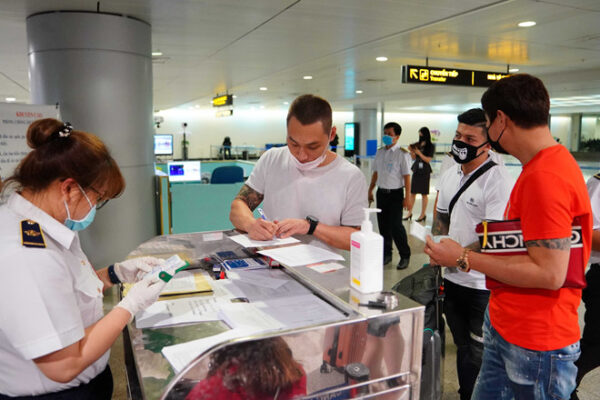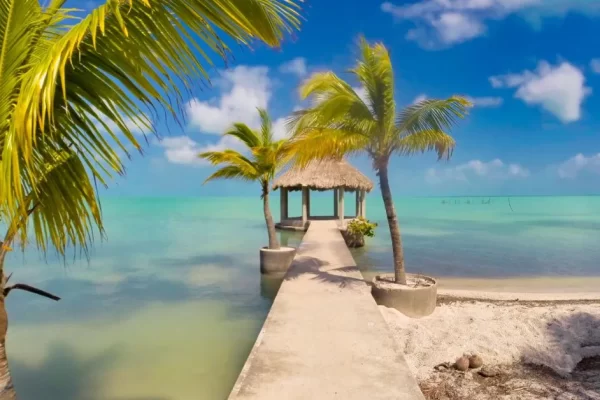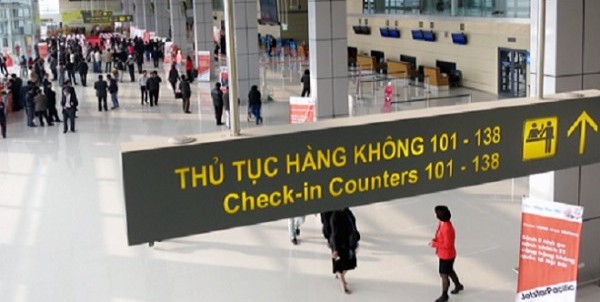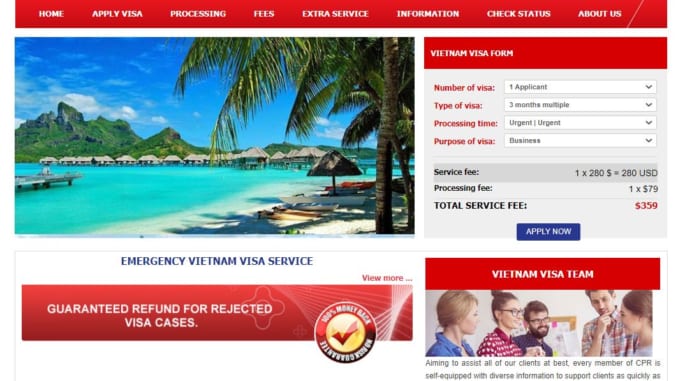
Vietnam, a mesmerizing country with its stunning landscapes, rich history, and vibrant culture, has become an increasingly popular destination for travelers worldwide. If you’re planning a trip to this enchanting Southeast Asian gem, obtaining a visa is an essential step. In this comprehensive guide, we’ll walk you through everything you need to know about getting a visa to Vietnam quickly and hassle-free. Whether you’re a tourist, business traveler, or digital nomad, this article will provide you with all the necessary information to ensure a smooth entry into Vietnam.
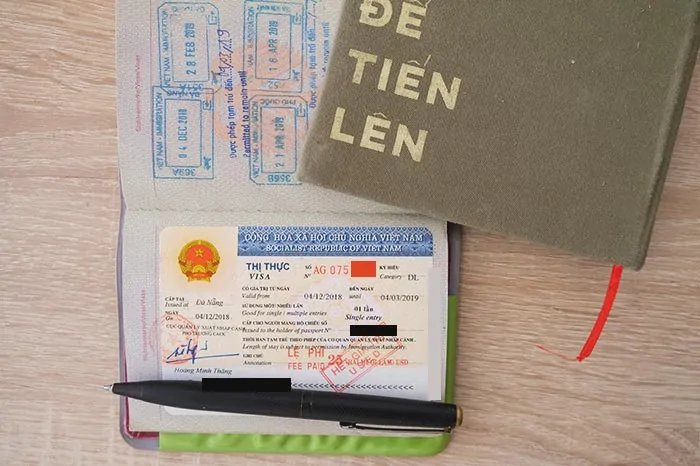
Table of Contents
- 1. Who Requires a Visa to Enter Vietnam?
- 2. What are the Different Types of Visas Available?
- 3. When is the Best Time to Apply for a Vietnamese Visa?
- 4. How to Obtain a Vietnamese Visa Quickly and Efficiently?
- 5. Pros and Cons of Different Visa Application Methods
- 6. Alternatives to Traditional Visa Applications
- 7. Step-by-Step Guide to Applying for a Vietnamese Visa
- 8. Comparing Different Visa Options
- 9. Tips for a Smooth Visa Application Process
- 10. The Best Choice for Your Vietnam Visa
1. Who Requires a Visa to Enter Vietnam?
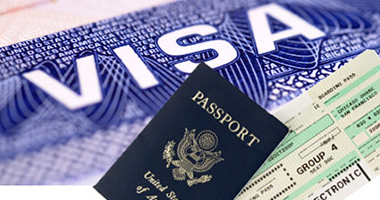
Before diving into the visa application process, it is important to determine if you even need a visa to enter Vietnam. The requirements vary depending on your nationality. Citizens of some countries enjoy visa exemption for a specific duration, while others need to obtain a visa in advance. For example, citizens from Singapore, Thailand, Malaysia, Indonesia, and several European countries can travel to Vietnam visa-free for up to 15 days. However, citizens from the United States, Canada, Australia, and many African countries must obtain a visa prior to their arrival. It is crucial to check the latest visa requirements based on your nationality before planning your trip to Vietnam.
2. What are the Different Types of Visas Available?
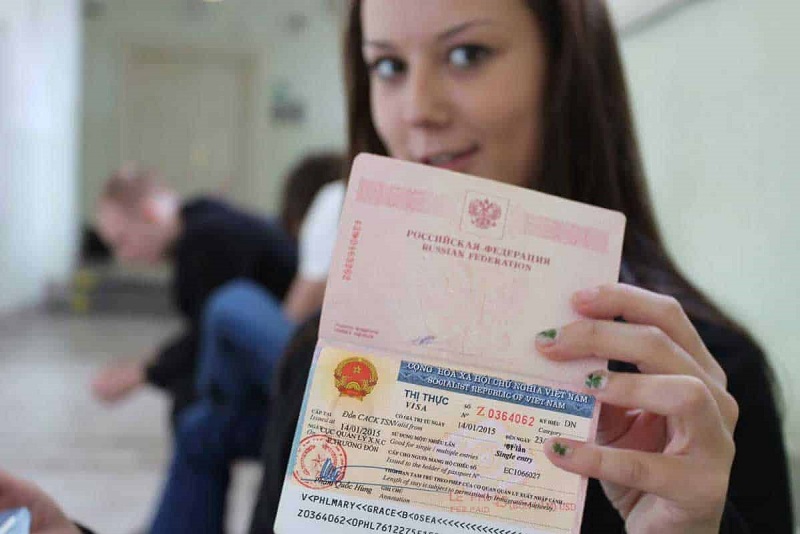
Vietnam offers various visa options to cater to different travel purposes and durations. The most common types include:
- Tourist Visa (DL): Suitable for leisure travelers staying in Vietnam for a short duration.
- Business Visa (DN): Designed for business travelers attending meetings, conferences, or exploring business opportunities.
- Work Visa (LD): Required for individuals planning to work or engage in long-term employment in Vietnam.
- Student Visa (DH): Specifically for students enrolled in Vietnamese educational institutions.
- E-Visa: An electronic visa that allows entry for up to 30 days and is available for citizens of certain countries through an online application.
These are just a few examples of the visa types available. The best option for you will depend on your purpose of visit, duration of stay, and nationality.
3. When is the Best Time to Apply for a Vietnamese Visa?
Timing plays a crucial role in ensuring a smooth visa application process. It is advisable to apply for a Vietnamese visa well in advance to avoid any last-minute hassle. The ideal time to start the visa application process is at least one month before your planned departure date. This will provide ample time for processing and unforeseen delays. However, if you’re short on time, don’t worry! Expedited visa services and online e-visa applications can help you obtain a visa quickly even if you’re pressed for time.
4. How to Obtain a Vietnamese Visa Quickly and Efficiently?
To obtain a Vietnamese visa quickly and efficiently, you have several options:
Traditional Embassy/Consulate Application
One of the most common methods is applying for a visa through the Vietnamese embassy or consulate in your home country. This involves submitting the required documents, such as passport copies, visa application forms, photos, and sometimes flight itineraries or hotel bookings. The processing time for embassy applications can vary depending on the embassy’s workload, but it typically takes around 3-5 business days.
Visa on Arrival (VOA)
Visa on Arrival is a convenient option for those arriving in Vietnam by air. Instead of applying in advance, you can obtain your visa upon arrival at one of Vietnam’s international airports. To do so, you need to apply online through a trusted travel agency or service provider. After receiving an approval letter via email, you can present it along with your passport and visa fee at the airport immigration counter. The visa on arrival process usually takes around 15-30 minutes, making it a popular choice for many travelers.
E-Visa Application
For citizens of eligible countries, the Vietnamese government offers an e-visa application system. This allows applicants to apply for their visa online without visiting an embassy or consulate. The process involves filling out an online form, uploading the required documents (such as passport scans and photos), and paying the visa fee electronically. Once approved, the e-visa is sent to the applicant via email, and they can print it out and present it upon arrival in Vietnam.
Each method has its ownpros and cons, and the best choice depends on your specific circumstances. Let’s explore them further.
5. Pros and Cons of Different Visa Application Methods
Traditional Embassy/Consulate Application
Pros:
- Allows for direct communication with embassy or consulate officials.
- Suitable for individuals who prefer to have their visa in hand before traveling.
- Ideal for those without access to online visa application options.
Cons:
- Requires visiting the embassy or consulate in person, which may be inconvenient or time-consuming.
- Processing times can vary, and there may be delays due to high demand or unforeseen circumstances.
- Additional costs involved, such as transportation expenses to reach the embassy/consulate and courier fees for passport return.
Visa on Arrival (VOA)
Pros:
- Convenient option, especially for travelers arriving by air.
- Time-saving, as there is no need to visit an embassy or consulate beforehand.
- Suitable for last-minute travel plans, as the approval letter can be obtained quickly.
Cons:
- Limited to air travelers only; not applicable if you’re entering Vietnam through land borders or seaports.
- May involve waiting at the airport immigration counter upon arrival.
- Possibility of longer processing time during peak travel seasons.
E-Visa Application
Pros:
- Easy and convenient online application process.
- No need to visit an embassy or consulate, saving time and effort.
- Fast processing time, typically within 3 business days.
Cons:
- Available for a limited number of nationalities.
- Restricted to single-entry visas for stays up to 30 days.
- Not valid for all entry points; check the list of eligible ports of entry before choosing this method.
Considering these pros and cons, the best visa application method ultimately depends on your specific needs and circumstances. If you prefer having your visa in hand before traveling, the traditional embassy/consulate application might be the right choice for you. If you’re arriving by air and seeking convenience, visa on arrival can be a suitable option. For eligible nationalities looking for a quick and online process, the e-visa application is ideal.
6. Alternatives to Traditional Visa Applications
Apart from the traditional embassy/consulate application, visa on arrival, and e-visa options, there are a few alternative methods worth considering:
Visa Exemption
As mentioned earlier, citizens of certain countries enjoy visa exemption for a specific duration when traveling to Vietnam. This means they can enter and stay in Vietnam without needing a visa. However, it’s important to note that the duration of visa exemption varies depending on nationality, ranging from 15 days to up to 90 days. Make sure to check the specific visa exemption rules for your country before planning your trip.
Visa Extension
If you find yourself in Vietnam and wish to extend your stay beyond the initial visa duration, you have the option to apply for a visa extension. This can be done through the Vietnam Immigration Department or authorized travel agencies within Vietnam. The extension period varies, typically granting an additional 7, 30, or 90 days, depending on the visa type and eligibility.
These alternatives provide flexibility for certain individuals who may not require a traditional visa application.
7. Step-by-Step Guide to Applying for a Vietnamese Visa
To help you navigate the Vietnamese visa application process with ease, here’s a step-by-step guide to applying for a Vietnamese visa through the traditional embassy/consulate method:
- Determine the type of visa you require based on your purpose, duration of stay, and nationality.
- Gather the required documents, including passport copies, visa application forms, photos, flight itineraries or hotel bookings (if requested), and any other supporting documents specified by the embassy or consulate.
- Find the nearest Vietnamese embassy or consulate in your home country and check their website for specific visa application guidelines.
- Fill out the visa application form accurately, ensuring all information is correct and matches your passport details.
- Submit the completed application form, along with the required documents, to the embassy or consulate either in person or via mail/courier service as per their instructions.
- Pay the visa fee, which can vary depending on the visa type and processing times, usually through cash, money order, or bank transfer.
- Wait for the processing time specified by the embassy or consulate. During this period, avoid making any travel arrangements until you receive your visa.
- Once your visa is approved, collect it from the embassy or consulate if you applied in person, or wait for its return if you submitted via mail/courier service.
- Check the validity dates and visa conditions carefully to ensure they meet your travel requirements.
It’s important to note that the step-by-step process may vary slightly depending on the specific embassy or consulate. Therefore, always refer to their official website or contact them directly for the most accurate and up-to-date information.
8. Comparing Different Visa Options
Tocompare the different visa options available for traveling to Vietnam, let’s take a closer look at some key factors:
Processing Time
Traditional embassy/consulate applications can have varying processing times depending on the specific embassy or consulate and their workload. It’s advisable to check their website or contact them directly for an estimate of how long it may take.
Visa on Arrival (VOA) generally offers a quicker turnaround time as the approval letter can be obtained within a few business days. However, it’s important to consider potential waiting time at the airport immigration counter upon arrival.
E-visa applications typically have a fast processing time, usually within 3 business days. This option provides a convenient and quick way to acquire a visa without visiting an embassy or consulate.
Validity and Entry Types
When comparing visa options, it’s essential to consider the validity and entry types they offer.
Traditional embassy/consulate visas can vary in terms of validity and entry types, depending on your purpose of travel and duration of stay. They can range from single-entry to multiple-entry visas, each with its specific validity period.
Visa on Arrival (VOA) is typically available as a single-entry visa for a specific duration, allowing you to stay in Vietnam for the designated period. It’s crucial to note that VOA is only applicable for air travel and not valid for land or sea entry.
E-visas are usually single-entry visas with a maximum stay of 30 days. They are designed for tourists and business visitors. If you plan to leave Vietnam and re-enter during your trip, you’ll need to apply for a new e-visa.
Cost
The cost of obtaining a Vietnamese visa can vary based on the visa type, processing time, and your nationality. Here’s a general breakdown:
- Traditional embassy/consulate visas often have fixed application fees, which can vary depending on your country of residence and the type of visa you’re applying for. Additional costs may include transportation expenses to and from the embassy/consulate and courier fees for passport return.
- Visa on Arrival (VOA) involves two separate fees: the service fee paid to the travel agency or visa facilitator who arranges the approval letter, and the stamping fee paid upon arrival at the airport immigration counter in Vietnam. The service fee varies among different agencies, while the stamping fee is fixed by the Vietnamese government.
- E-visas have a fixed application fee, which varies depending on your nationality. Some countries may be eligible for fee exemptions or reduced rates.
Comparing the costs of different visa options can help you make an informed decision based on your budget and travel plans.
9. Tips for a Smooth Visa Application Process
- Start the application process well in advance to avoid any last-minute rush or potential delays.
- Familiarize yourself with the specific requirements for your chosen visa option and ensure you gather all necessary documents.
- Double-check the accuracy of your application form and supporting documents to minimize the chances of rejection.
- If applying through an embassy/consulate, be prepared for any additional requirements, such as interviews or biometric data collection.
- Keep track of any updates or changes in visa regulations by regularly checking the official websites of embassies, consulates, or authorized visa agents.
- Consider using the services of a reputable visa agent or consultancy if you feel uncertain about the application process or want assistance in navigating through it.
- Ensure your passport has a sufficient validity period beyond your intended stay in Vietnam.
- If applying for a visa on arrival, carry sufficient cash in the appropriate currency (usually USD) to pay the stamping fee at the airport.
- Maintain copies of all important documents throughout your journey, including your visa, passport, and proof of accommodation.
Following these tips can help streamline your visa application process and increase the chances of a successful outcome.
10. The Best Choice for Your Vietnam Visa
After considering the various visa options, their pros and cons, and evaluating your specific needs, you can determine the best choice for your Vietnam visa. Here’s a summary to help you make an informed decision:
- If you prefer having your visa in hand before traveling, the traditional embassy/consulate application is the most suitable option.
- Travelers arriving by air and seeking convenience can opt for Visa on Arrival (VOA).
- For eligible nationalities looking for a quick and online process, the e-visa application provides a convenient solution.
Remember to check the specific requirements, validity periods, entry types, and processing times for each option to ensure they align with your travel plans.Certainly! Here’s the continuation:
It’s important to carefully evaluate your travel plans, budget, and personal preferences when choosing the best visa option for Vietnam. Consider factors such as your purpose of visit, duration of stay, entry type needed, processing time, and cost.
If you’re planning a short trip and want to avoid embassy visits, the Visa on Arrival (VOA) option may be suitable. It offers convenience and a relatively quick process, especially for those traveling by air. However, keep in mind that VOA is only available for air travel and requires an approval letter obtained through a trusted travel agency or service provider.
On the other hand, if you prefer having your visa in hand before traveling and are comfortable with visiting an embassy or consulate, the traditional embassy/consulate application is a reliable choice. Be sure to check the specific requirements and processing times for your country at the respective embassy or consulate websites.
For eligible nationalities seeking a fast and online application process, the e-visa option is worth considering. It provides a convenient way to obtain a visa without embassy visits. However, note that e-visas are typically single-entry and have a maximum stay of 30 days.
Ultimately, it’s crucial to choose the visa option that aligns with your needs and preferences while ensuring compliance with the immigration regulations of Vietnam.
Remember to check the latest visa requirements and regulations before applying and stay up-to-date with any changes. The official websites of embassies, consulates, and authorized visa agents are reliable sources for accurate information.
By carefully considering all these factors and following the necessary steps, you can obtain a Vietnamese visa quickly and efficiently, ensuring a hassle-free entry into this captivating country. Enjoy your trip to Vietnam!

